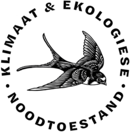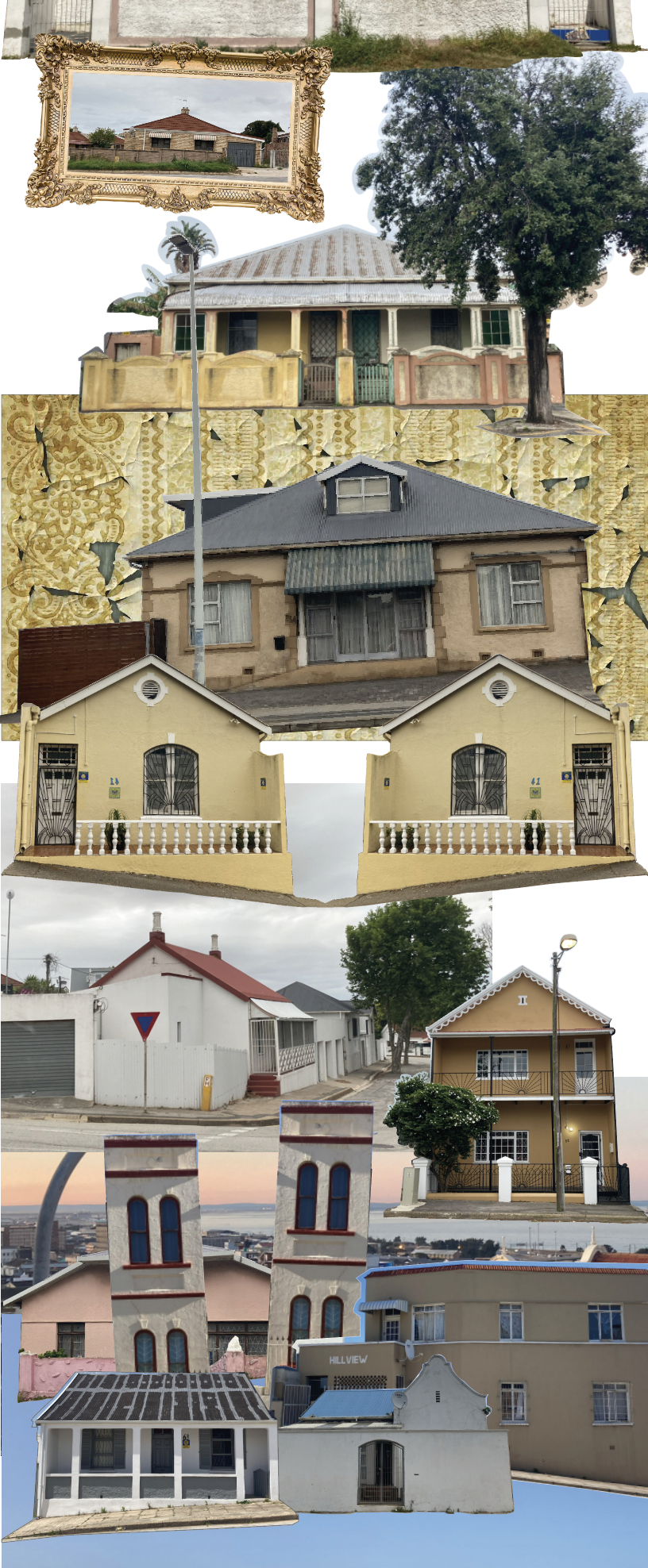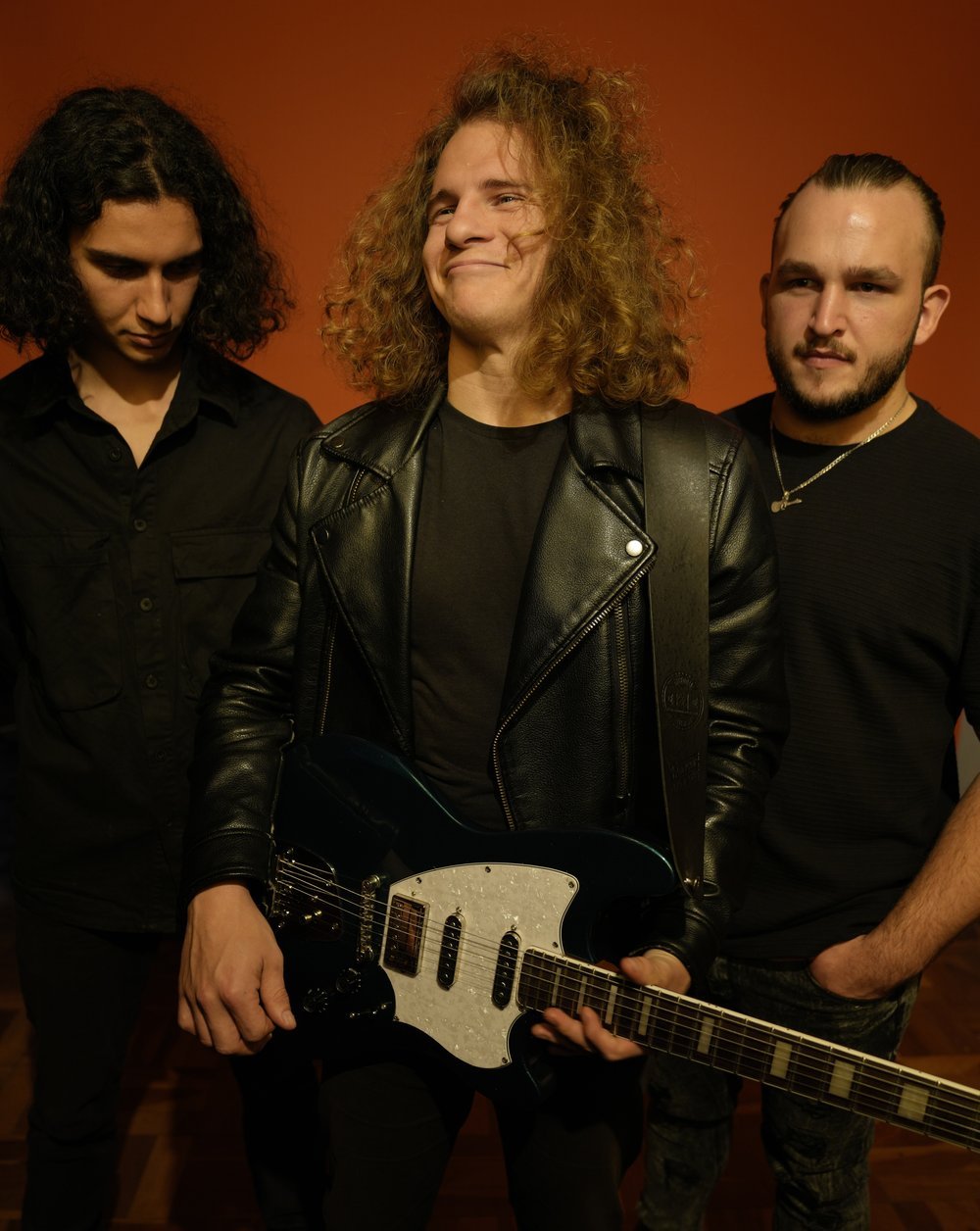As hierdie mure kon praat: @shittycitype se dokumentasie van Gqeberha

Ever-shitty, ever-gritty: om die alledaagse te verhef
Gqeberha het ’n bad rep. In 2006 noem Gareth Cliff die Oos-Kaap die “armpit of Africa” en in 2008 vergelyk Cliff Gqeberha met “the fat child at school which everybody wants to bully”. Die “Windy City” en die “Friendly City” is eensklaps deur Cliff denounce tot oksel en punching bag van ’n nasie.
In ’n artikel getiteld Double vision and suspended conversations: Reconstituting landscapes of memory in Port Elizabeth, South Africa skryf Naomi Roux oor Martha Langford se konsep van die foto as ’n “suspended conversation”:
[…] the photograph, as a material object, is a locus for a symbolic or literal conversation between two or more viewers, as well as a conversation between past and present that requires narrative interpretation in order to be “resumed” — bridging the moment of suspension to create new dialogues between past and present and to catalyse alternative layers of meaning for the photograph.
Die foto is, volgens Langford, nie bloot ’n refleksie of direkte verteenwoordiging van die verlede nie, maar ook “a locus for a new set of meanings and affective responses in the present”. Volgens Roux is stedelike landskappe daarom analogies met foto’s: “Urban spaces and objects function as a point of departure for conversation, storytelling, affective responses of anger or grief, or for the reconstitution of lost landscapes, homes or selves — an intertwining of self, memory and concrete urban realities […].”
Enter @shittycitype (SCPE): ’n Instagram page opgedra aan die ever-shitty, ever-gritty Gqeberha, formally known as Port Elizabeth.
Intrigued deur @shittycitype se collages en foto’s van Gqeberha se stedelike landskap, wat gekategoriseer en geargiveer word met uiteenlopende titels soos “Street view”, “Pray”, “Driveby”, “Vibracrete” en selfs “Cats of PE”, het ek in die DM’s van hierdie Instagram page geslide.
Die skepper van @shittycitype verkies om so anoniem moontlik te bly. Ek verwys hier dus net na Lois. “I want people to draw their own conclusions about the images they see instead of being distracted by the labels we give ourselves i.e. gender, race, religion, political persuasions. I feel this is a healthy boundary for me as an artist? I dunno,” skryf Lois aan my in ons e-pos-uitruilings.
Lois — gebore en getoë in Gqeberha — het @shittycitype in 2022 begin. “Shitty City PE came to life once I knew I was going to be living here for some time again,” vertel Lois, wat ná skool vir ’n hele paar jaar oorsee en in Kaapstad gewoon het. “I wanted to record this place. For one thing, it’s so full of character and quirk and it’s funny as fuck. Wes Anderson could shoot this place without changing anything. It was definitely also a way for me to reconnect with a city whose landscape is rapidly changing from the one I knew growing up. A way to reconcile the city I once loved, and that held me, with what it is today. It’s a love story about a city, it’s a commentary and sometimes a lament.”
Lois beskryf SCPE as ’n digitale collage board en ’n knip-en-plak-projek wat die storie van voormalige PE vertel. Hierdie storie is, volgens Lois, deels fiksie, deels sosiale kommentaar en deels pop culture chronicle wat urban argitektuur, ruimte, vorm, tekstuur en sosiale inhoud as temas gebruik – “and with a generous dash of swansong vibes”. Hierdie alles geskied deur die lens van ’n bepaalde estetiese perspektief, wat Lois beskryf as “1 part architecture, 2 parts urban decay, [and a] liberal dash of broken dreams”. Lois voeg by dat ’n donker, quirky humor nóg ’n belangrike bestanddeel van hierdie mix is.
Lois beskryf SCPE se estitika verder as “South Africana”: “[A]n aesthetic colloquial to this place, South Africa, and then even peculiar to PE, its own look, a feeling, an attitude, an overall texture.” Dis ’n estetika wat vir Lois fassinerend, poëties en melankolies is. SCPE is hulle poging om dié vibe te record — doelbewus en “faithfully, like a scribe”.
Op my vraag hoe Lois Gqeberha aan iemand sal beskryf wat nog nooit daar was nie, kom die tong-in-die-kies-antwoord: “PE is a one horse town and the horse died in 1950… Just kidding, my grandad used to say that.” En op ’n ernstiger noot: “My PE is a small-town city of surfers and shitty drivers and semi-friendly people and art deco architecture and run down streets. Die Baai: City of 3000+ water leaks. It’s always been a little gritty but it felt like one big caravan park next to the sea — with some truly wonderful architecture as a bonus. These days it feels quieter and the inner city is decaying in large part like most South African cities. People are mean to each other on the roads. But there’s still lots of good here. As teenagers growing up in PE there was almost nothing to do so we hung out at valley parties (there’s a valley and river that runs through a large part of central PE for those not familiar and we used it to commute on our bikes or on foot or to hook up). […] It was kinda idyllic to grow up here.” En dan weer spitsvondig: “Some of the best people I know come from this place, that part is fact.” Maar Gqeberha is vir Lois ook “a place of heritage, incredibly rich in layers of culture and architecture, interwoven but also kinda smooshed together in this small space that doesn’t have any water left anymore… and with its fair share of pretty dramatic history too”.
Ek self lees SCPE as ’n tipe community intervention. Hieroor stem Lois saam met my: “Tell me it’s an intervention without telling me it’s an intervention…” SCPE dien as samekomsplek vir ander wat in PE bly, of die stad bloot net koester, om stories, herinneringe en foto’s met Lois te deel.
Maar die meeste van alles probeer Lois ’n bepaalde gevoel vasvang: “My scenes or collections of images per post are sometimes related by colour or texture or nothing at all just proximity and that’s really how this city (or any city) is – a random patchwork of big buildings, shops, little houses and gritty spaces. I feel like I’ve just scratched the surface and it’s amazing to have a muse that feels so vast but also so small and fragile at the same time. Is that presumptious for a shitty little Instagram feed? Yes probably, but what is social media if not a terrible alter-ego,” skryf Lois.
No Place Like Home, @shittycitype
Ek is veral ook geïnteresseerd in die formaat van @shittycitype se feed as een groot, overlapping collage, en Lois se metode om geboue en city sights te klassifiseer en te groepeer. Hieroor vertel Lois: “I think it’s fitting, it’s a never-ending story […]. Collage also lets me create my own shitty cityscape and having my feed as one long continuous artwork is some of the stuff I love about the flexibility of digital design and how we weave our stories through these virtual spaces. My feed was not originally a continuous scroll, […] but it naturally just wanted to become a never-ending puzzle story of its own accord.”
As opgeleide (en day-job-) grafiese ontwerper en -fotograaf, beskou Lois die online space as ’n medium, sowel as ’n platform vir kuns. Maar dis ’n platform wat met sy eie struikelblokke kom: “Shitty City PE was effectively cancelled in the algorithms for a bit with Instagram citing ‘profanity’ as the reason,” vertel Lois. “I’m not sure why they lifted the ban, but it’s really disconcerting that artists who are clearly not promoting harmful content – there is a huge difference between evocative and harmful – can have their freedom of expression taken away at the whim of a nameless, faceless crowd. Ultimately it doesn’t make me feel like we have more autonomy but rather something quite the opposite. It reminds me of Chris Rock’s show titled Selective Outrage. I am aware that the content of what I post may be emotive, triggering even sometimes as it documents the intimate, everyday life of humans albeit through buildings and brickwork and shapes.”
Lois se kreatiewe proses vir die skep van SCPE se inhoud is eenvoudig: “Very simply I go adventuring in the city and record what I see... Just point and shoot on my iPhone.” Behalwe vir die skep van collages doen Lois geen post-production werk aan die foto’s wat op hierdie wandelinge in die stad geneem word nie. “I intentionally don’t need or want the imagery to be technically good or even sound sometimes. Get it, shitty city...”
SCPE is juis Lois se poging om teen die grein van tradisionele kunsopvattings te werk. “I decided to not touch up my imagery or use Go-Pros or anything other than my iPhone but rather wanted to record things ‘as they are’ in their imperfection.” En ook: “I’m really interested in recording things as they appear in the now, in the light of that particular moment/day/context. The opposite of sugar-coating which I’ve had to do always in my art career,” skryf Lois.
Dis iets waarvoor Lois baie flack kry van sommige online trolls wat uitwys dat foto’s skeef is of shitty beligting het, maar hierdie kritiek sit Lois nie af nie: “Don’t you get it, it’s called Shitty City for a reason!”
Lois beskou die stad as ’n muse. “PE is such a unique character itself you hardly have to search for content. The city herself is my ever changing muse, she holds daily inspiration for me.” Om respekvol om te gaan met hierdie muse, is verder vir Lois belangrik. Lois beklemtoon dat die projek so non-invasive moontlik is; geen gesigte word gewys of presiese ligging word gegee as daar nie toestemming is nie.
Oor my vraag op hoe SCPE Lois se verhouding met die stad beïnvloed het, en vice versa, antwoord Lois: “If anything I’ve become even more aware of how richly layered it is, what architectural and historical gems we harbour here. As I drive the city streets I remember how it was such a cosy cocoon to grow up in... Sadly I am more aware than ever of how unsafe it is on our streets. I’m also acutely aware that the city is on its knees, falling into decay and disrepair like so many others in South Africa and across the world right now.”
Al is SCPE ’n ode aan die stad, is dit daarom, volgens Lois, “more of a lament, and I’m not holding my breath”.
Ek vra vir Lois of daar enige ander Suid-Afrikaanse stede is wat op soortgelyke wyse vasgevang kan word, en of PE net anders tref. Hierop antwoord Lois: “PE does hit different. Because it’s my home or because of its uniquely colloquial character or both – and that’s why I chose the name. Gareth Cliff called it the armpit of South Africa and many people, especially those who live in bigger cities, think it’s pretty shit, working in Cape Town people definitely look down their noses when you say you come from PE. Sure it is shitty in parts, but it’s also quirky and quaint and historically rich and it breeds a lovely kind of person who is both hardy and humble and innocent in a way.” Maar tog: “Other places I’d love to record would be Graaff-Reinet, Rhodes in winter, a whole feed just about the starry skies of Steytlerville or the slow roads and even slower peoples of the Cape Winelands to mention but a few...”
Soos Lois sê: “Walls really can talk.” En, belangriker nog: “To show beauty in all its shittyness, to try to learn to elevate the everyday to where it should be, in the realm of wonder, is one of the practices of happiness.”
Eerste en oudste Afrikaanse tydskrif, sedert 1896
Ons bou aan ’n moderne beeld van hoe Afrikaanswees lyk, lees en klink. Het jy van As hierdie mure kon praat: @shittycitype se dokumentasie van Gqeberha gehou? Dan ondersteun ons. Vriende van Klyntji word op hierdie bladsy gelys.













